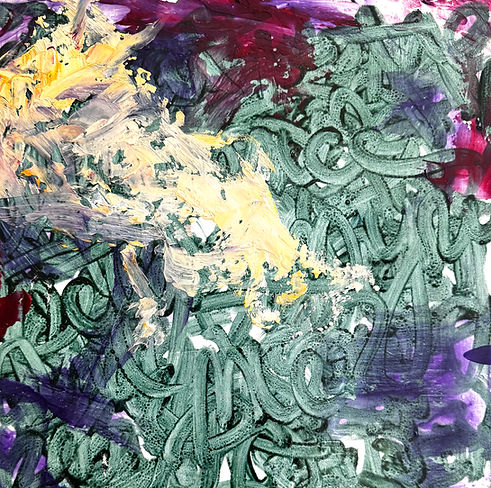
TELL ME A STORY
EMBED YOUR THOUGHTS IN ART
Creating an abstract painting that evolves from a written narrative into a visual representation of that story is an extraordinary process. It allows you to translate words and actions into shapes, colors, and textures. Unlike painting from an emotional or healing perspective, this approach focuses on storytelling through visual elements. Creating an abstract painting in this way is not just about the visual outcome; it's about the process of transforming personal narratives into something universal. - Melissa Erlenbach ©2024
LETS GET STARTED
STEP 1 • SELECT YOUR STORY
Select a story that has personal significance to you. The emotional connection to the content will translate into your artwork.
Your narrative can be anything—a myth, a personal memory, a scene from a book, a poem, written work, or even a moment from a movie. Select a story that intrigues you and has strong visual elements.
STEP 2 • PREPARE YOUR CANVAS
Choose a canvas size that feels comfortable for you to work on. Prepare the canvas by applying a layer of gesso if it's not already primed. This will help the paint and ink to adhere better to the surface.
STEP 3 • WRITE YOUR STORY
Using a pencil, pen, or brush with thinned paint, Begin writing your story on the canvas. Write it out as many times as you can, turning your canvas and overlaying the text until the canvas is filled. The writing does not need to be legible; it's the act of writing and the layers that will contribute to the final piece. In my example, I am using thinned out oil paint on cradle panel.

Step 4: Observe and Reflect
Observe the patterns, textures, and shapes that have emerged from the overlapping text. You may start to see figures, shapes, or forms that stand out to you. Reflect on what these shapes might represent in the context of your story.
Step 5: Enhance the Shapes - This step is optional
If you choose to, using a lighter pencil or a thin brush, outline any shapes or figures that you want to develop further.
This may help these areas to stand out as you begin to add color.
I go straight to painting and omit this step in my example.
Step 6: Introduce Color
Choose a color palette that resonates with the mood and theme of your story. For instance, a character's passion might be symbolized by a fiery red swirl, or a tranquil scene could be shown through soft blue strokes. Colors carry meanings and can set the mood of your painting. Textures can add depth and interest. If your story is intense and dramatic, sharp contrasts and heavy textures might work well. A softer narrative might call for pastel colors and smooth transitions.
To apply color to your canvas, work into the shapes and figures you've outlined. Use brushes, sponges, or even your fingers to apply the paint, allowing your intuition to guide your choices.


Step 7: Develop the Composition
As you add color, pay attention to the balance and composition of the piece. Adjust your shapes and the intensity of your colors to create a harmonious composition that feels right to you.
Step 10: Finalize Your Visual Narrative
Step back from your work frequently to assess the overall effect. Make any final adjustments to ensure that the painting feels complete to you. Your story is now told in a visual language that is unique to you.
Step 8: Layer & Texture
Continue to layer the paint, adding texture and depth to the painting. You can use different techniques such as dripping, splattering, sgrafitto, or scraping to add interest and dimension.

Step 9: Eliminate the Words
Work over the canvas until the initial words you wrote are no longer visible. Your painting should now be moving away from a literal narrative and towards a visual representation of your story.

Embrace the freedom of interpretation and enjoy the process of translating words into your unique visual language.
Reflect on the journey you took from the written word to the abstract visual
Step 11: Reflect on Your Journey
Once you feel your painting is complete, spend some time with it.
• Does the painting evoke the narrative? If a stranger looked at your painting, you wouldn't expect them to know the story, but you would hope they feel a sense of it.
• Make adjustments as needed to enhance the storytelling.
Remember, abstract art from a narrative is not about painting a clear picture but about creating a visual experience that echoes the essence of the story.
